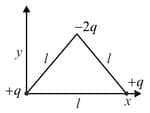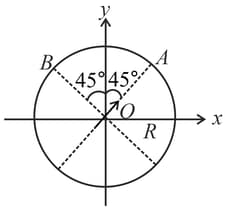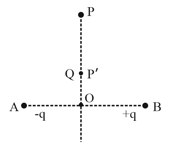EASY
Earn 100
What is the angle between the electric dipole moment and the electric field strength due to it on the equatorial line?
(a)
(b)
(c)
(d)None of these
50% studentsanswered this correctly
Important Questions on Electrostatics
EASY
MEDIUM
Determine the electric dipole moment of the system of three charges, placed on the vertices of an equilateral triangle, as shown in the figure:

EASY
MEDIUM
HARD
( is permittivity of free space, dipole size)

MEDIUM
MEDIUM
EASY
MEDIUM

The distance from at which both of them produce the same potential is:
MEDIUM
MEDIUM
EASY
EASY
MEDIUM
EASY
EASY
MEDIUM
MEDIUM
HARD
MEDIUM


